This 12' tall Siberian elm belongs to my neighbor.
It's not in bad shape, but there is clearly something wrong with it, since some of the leaves
have spots and the tree seems to be thinning somewhat.
The branch was cut in early June.
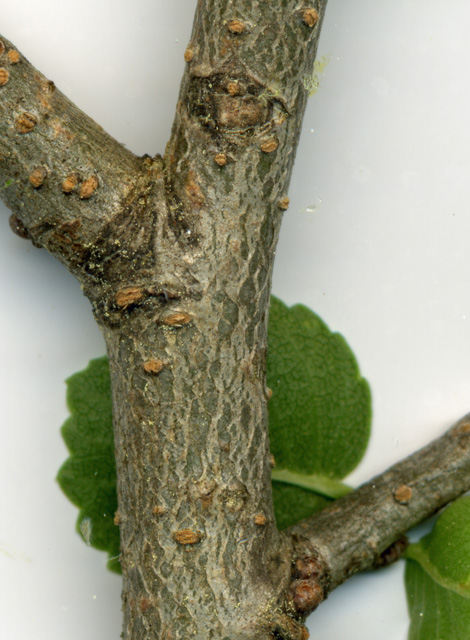
1
This is a portion of a branch cut from the tree.
It has a diameter of about 1/2 inch and was taken from a larger branch about 6' high.
Close examination shows only a minimal number of spores at the branch junctions.
Yet that is the exact location favored by white canker spores.
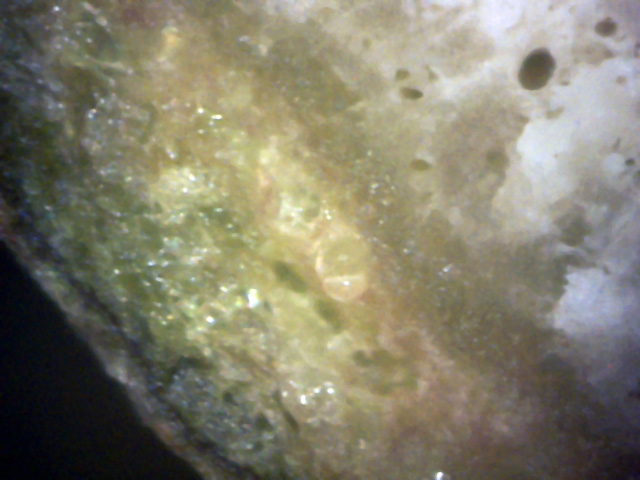
2
←
←
A microscope view of a branch cross section shows several transparent spores just inside
the bark (black arrows).
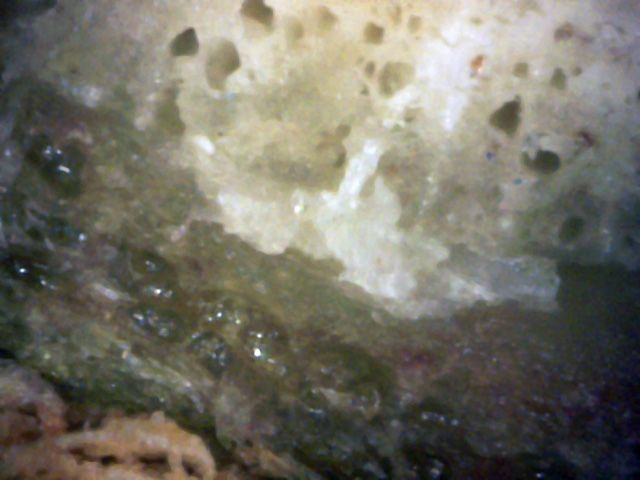
3
A↓ B
↓ C
↓ D
↓ ←E F
↓ G→
There is a lot to see in this 400x microscope picture!
The bark is in the lower-left corner (A). The green cortex lies under it(B).
Under that is the phloem, which should be uniform in appearance.
Instead, it contains numerous gelatinous blobs(C).
The phloem, in turn, should meet the white xylem cleanly. It does that at one area (D).
But note the blob of white canker material growing between the phloem and xylem (E)!
This canker is separating the xylem from the phloem (F).
This cankerous blob is connected to a hypha that runs down a conducting vessel of the xylem(G).
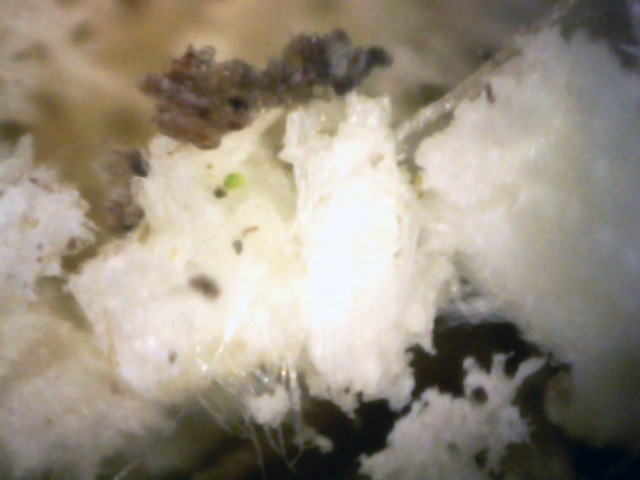
4
This picture shows a large amorphous white structure that doesn't appear at all like wood.
While it may be white canker, it could also be a dislodged piece of xylem.
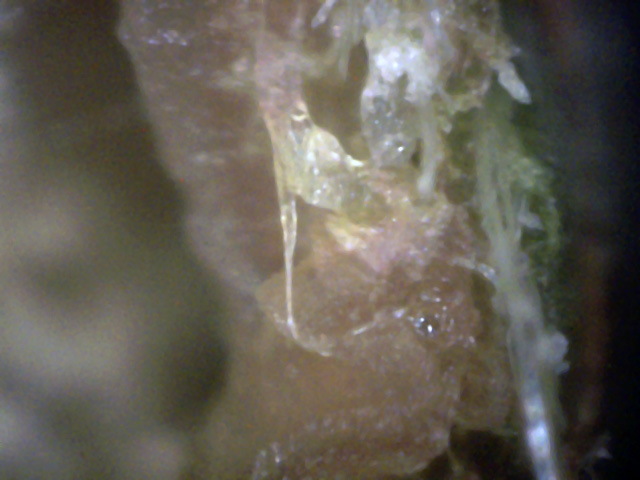
5
This growth is just under the bark. The phloem appears to have been replaced with a pinkish canker
material that has blobs of white canker growing through it.
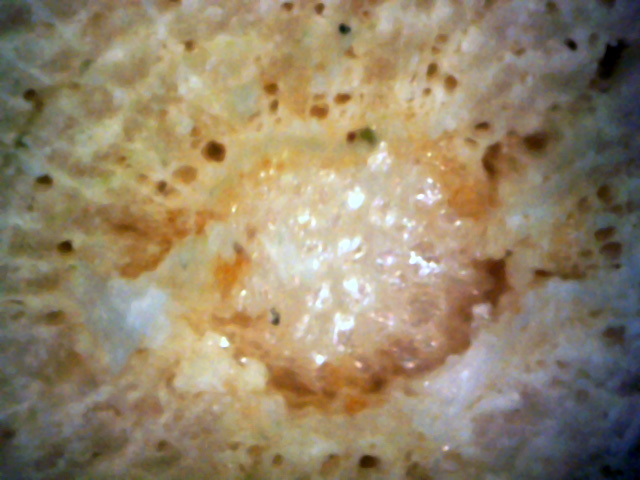
6
←
←
This is what the pith at the center of the branch looks like - a white frothy substance.
It should be surrounded by wood (xylem) resembling normal tree rings.
But note the areas of white cankerous material just outside the pith (black arrows).
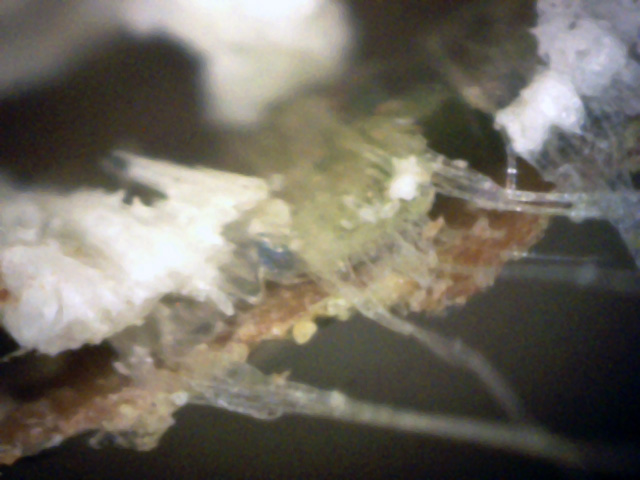
7
The brown substance running from the lower-left to the upper-right is the bark.
Note that there is no underlying cortex - the bark has separated from it!
The milk-white substance appears to be white canker.
The semi-transparent hyphae are also a form of white canker.
Unlike other trees, this Siberian elm is not a host to extensive spore patches on its bark or leaves.
Instead, the evidence of white canker infection can be seen when viewing twig cross-sections with
a microscope. As in other trees, the nutrient transporting phloem layer is attacked and consumed.
But unlike other trees, there is also evidence that xylem tissue is also attacked.